PROTECT YOUR DNA WITH QUANTUM TECHNOLOGY
Orgo-Life the new way to the future Advertising by AdpathwayCommon flax is an ornamental and rewarding crop to incorporate into the home garden, from edible beds to informal borders and everything in between. Seeds are powerhouses of nutrition, and growing our own means plenty of protein and omega-3s on the table. Gardening expert Katherine Rowe outlines how and when to harvest the historic grain for versatile applications.

Written by Katherine Rowe Horticulture review by Sarah Jay Last updated: July 7, 2025 | 3 min read
Flax is an ancient crop grown for its nutritious grains, oils, linen fibers, and ornamental flowers. It was an essential crop in early America before the cotton gin and the rotation of larger grains like corn and soybeans.
Linum usitatissimum has historical and modern uses, from linseed oil and paint pigmentation to textiles to protein-rich edible seeds. The seeds are also a significant source of the omega-3 essential fatty acid, alpha-linolenic acid. The home garden benefits from their easy blue blooms that attract pollinators, and their sought-after seeds are valuable and versatile culinary additions.
Common flaxseed is an annual that begins blooming in late spring and finishes by late summer. Each blue bloom lasts only a day, but it’s quickly replaced by another, ready to open for a succession of flowers. The self-pollinating blooms fade to produce a small capsule that holds 4 to 10 glossy, flattened seeds.
It’s these seeds that we can use in daily nutrition and pressed oils. Knowing how to harvest, process, and store flaxseed lets us appreciate the qualities of the well-rounded annual with a rich heritage.
Growing Flax
 Full sun, well-drained soil, and warm weather are key.
Full sun, well-drained soil, and warm weather are key.Flaxseed is easy to grow and needs little tending once established. Whether growing bulk plants, just a few, or even a pot-full, you’ll have a decent yield of usable seeds for eating, pressing, or storing.
Optimal growing conditions include:
- Full sun, with six+ hours of sunlight daily
- Well-draining, organic loams
- Slightly acidic to slightly alkaline soils with a pH between 6.0 and 7.5
- Warm, mild conditions with ideal temperatures between 65-70°F (18-21°C)
- Moist soils, allowed to dry out between watering sessions
- Weed-free beds to reduce competition and the spread of pests and diseases
Flax reaches two to three feet tall. Multibranching stems are slender and flexible as they hold the airy blooms.
Common annual flax withstands cool conditions in the 20s (around -4°C), though immature seeds are susceptible to early fall frost damage. Use frost cloth or mulch as insulation if the forecast points to extended temperatures at the low range. While flaxseed tolerates occasional temperature spikes in the summer, it slows in extended periods of high heat and dry spells.
Timing the Harvest
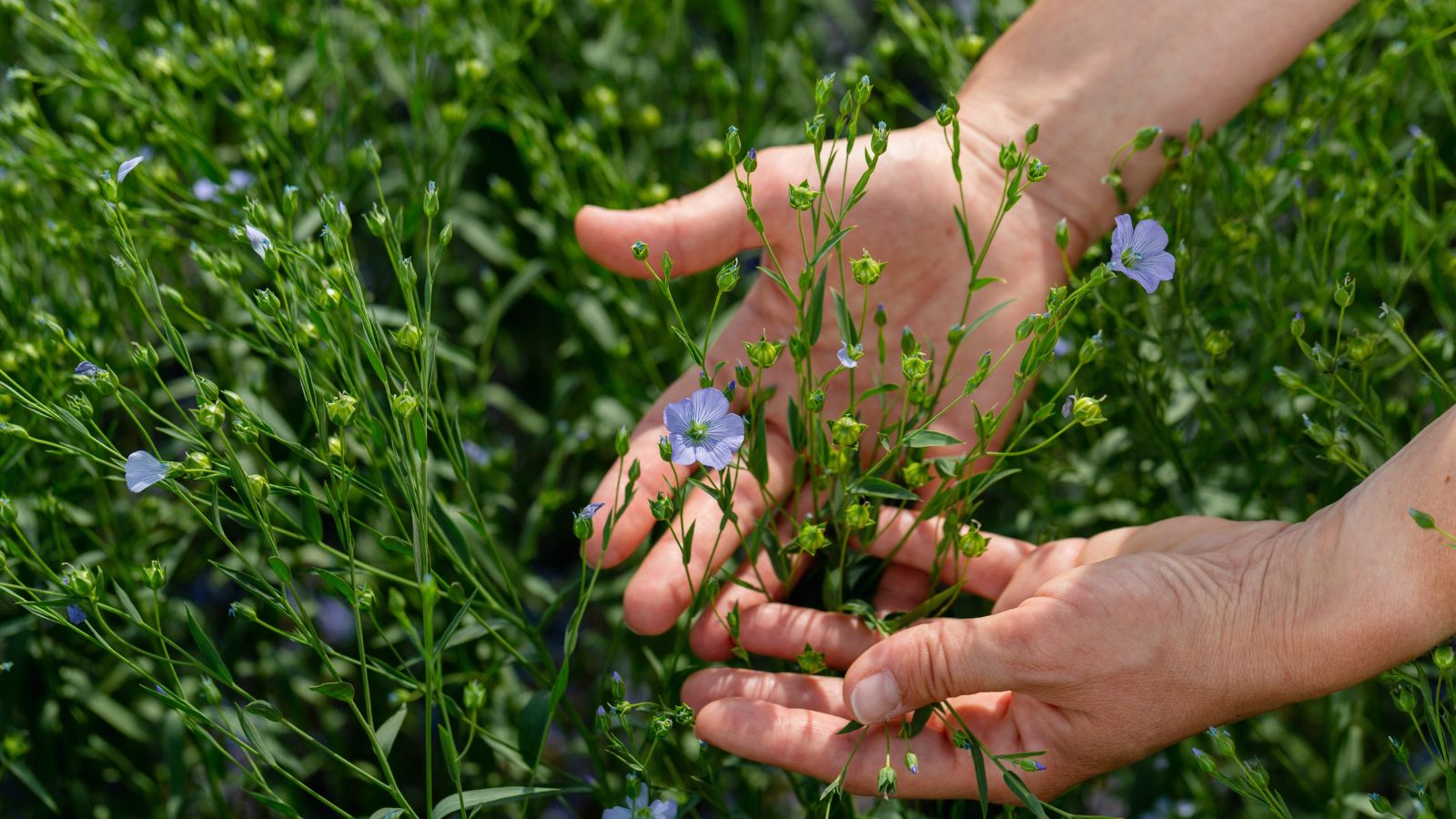 Harvest flaxseed about 100 days after planting.
Harvest flaxseed about 100 days after planting.As the seeds begin to ripen later in the season, reduce irrigation to boost production. Withholding consistent moisture fosters seed development rather than encouraging continual blooming. Fall rains can damage the seeds, so aiming to harvest before wet weather and early frosts is best.
At harvest time, you’ll likely have some green leaves and a few flowers. Most of the stems, though, should show brown seed capsules.
Flax seed capsules are ready to harvest about 100 days from planting or two months after flowering begins.
Knowing When To Pick
A tawny color and a dry texture are signs that flaxseed is ready to harvest. Look for seed capsule browning at 70-90% coverage for peak harvest.
Color
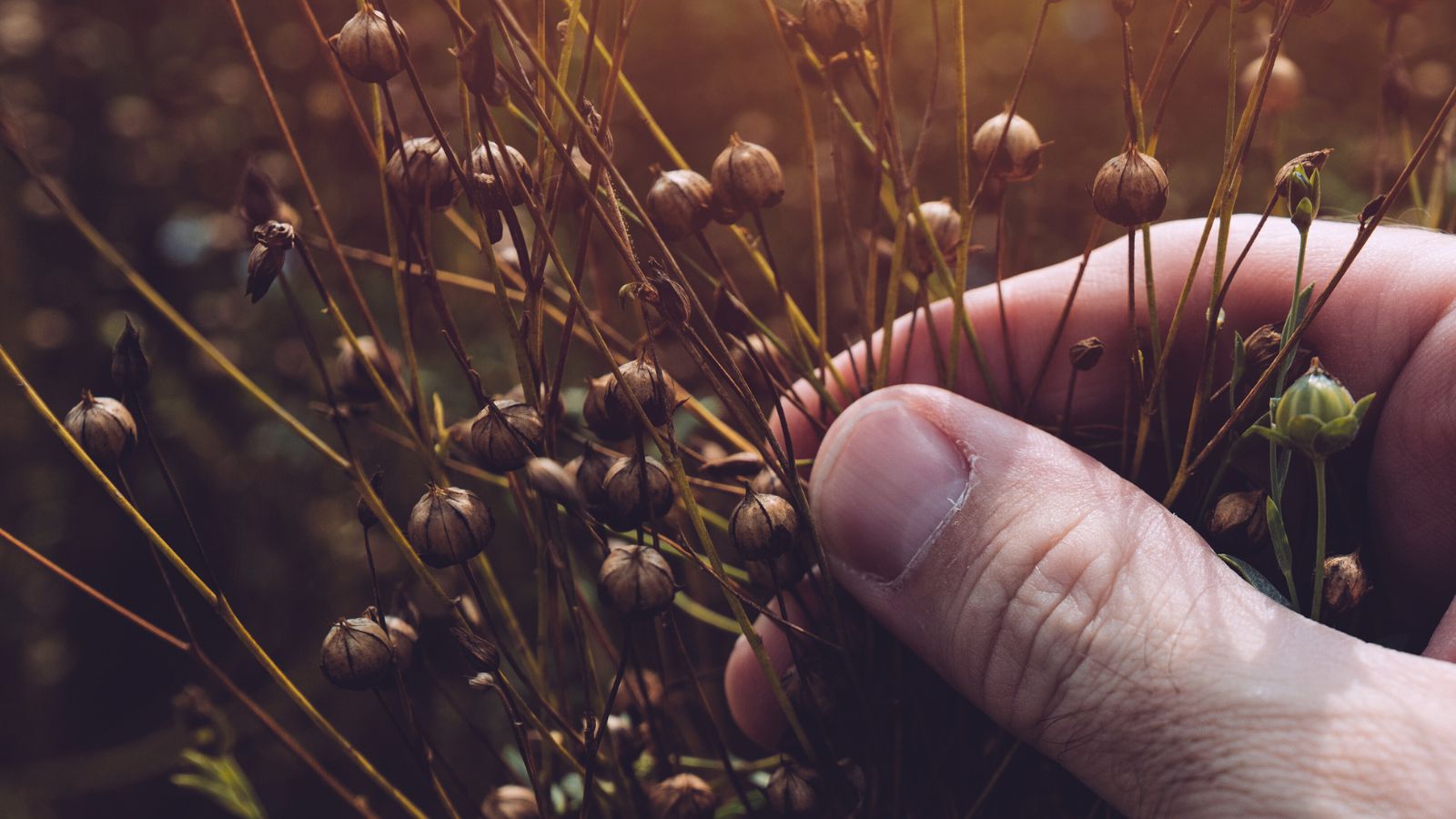 The golden-brown color is an indicator that the flax is ready.
The golden-brown color is an indicator that the flax is ready.Color is the best visual indicator of when to harvest flaxseed. After the flowers drop and form the seed capsules, they’ll transition from green to golden brown when ready to harvest. You’ll have lots of pea-sized little rounds on a plant that’s turning tan as it dries.
Sound
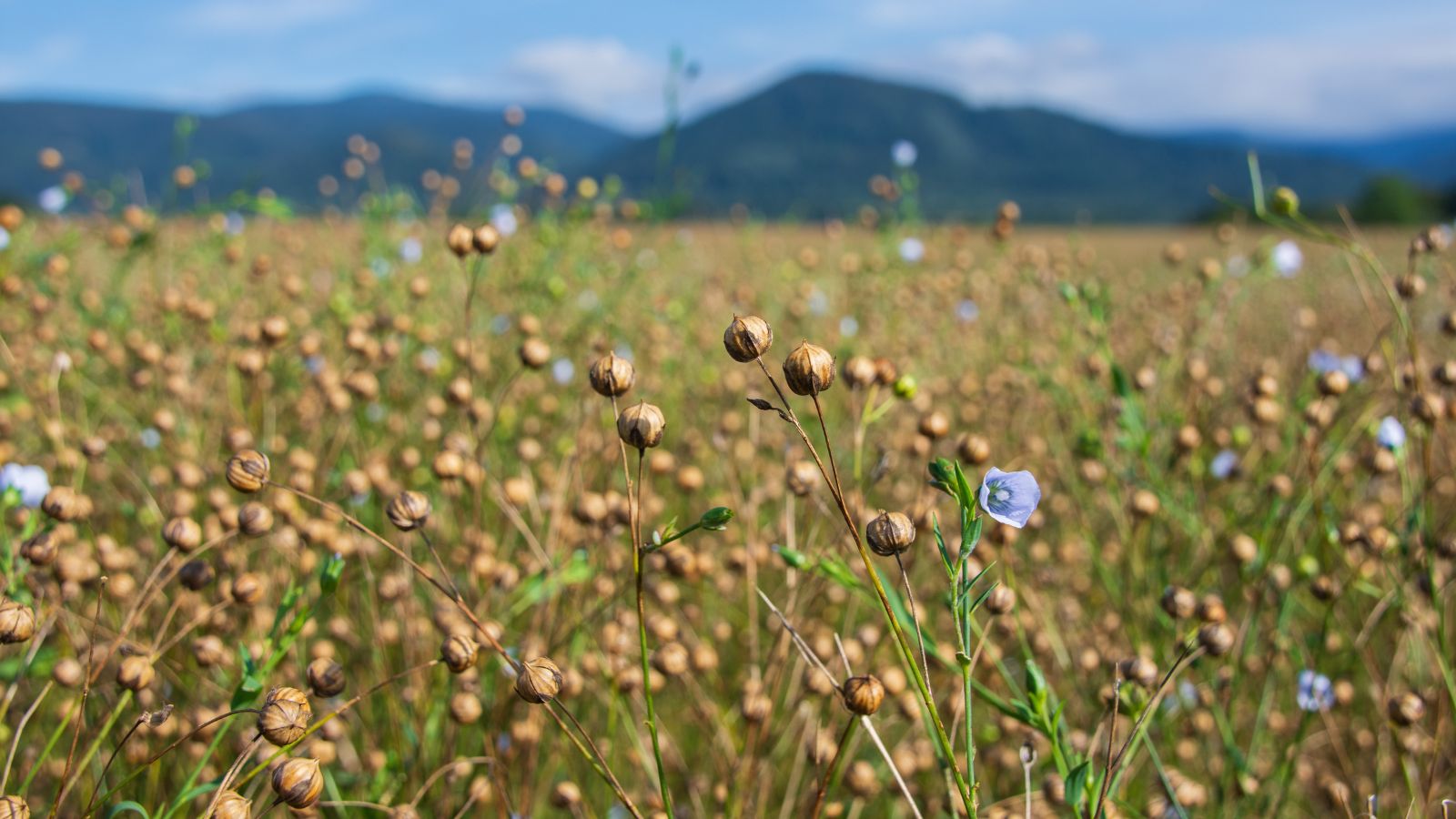 Little seeds will make a shaking sound inside their pods.
Little seeds will make a shaking sound inside their pods.In tandem with a tan coloration is the sound the little seeds make inside the pods. When fully dry and ready to pop, they’ll rattle inside the shell. Give the stems a shake and listen for the rattle of the beads inside the pod.
How To Pick
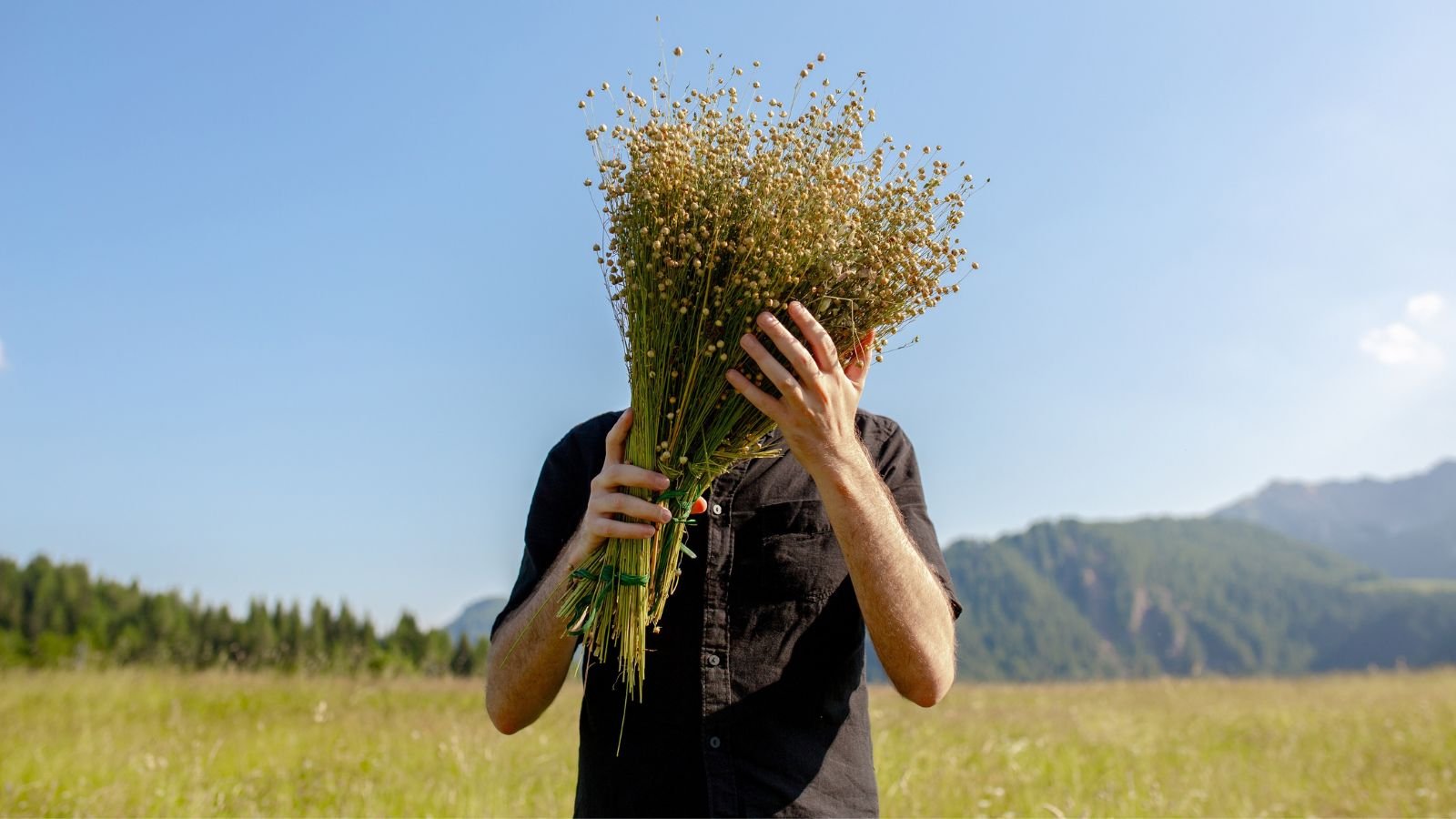 Use a blade or scythe to cut bundles of stems.
Use a blade or scythe to cut bundles of stems.To harvest flax, grab a handful of stems. Use a sharp blade or hand scythe to cut them at their base.
Shake the stems over a sheet or cloth to release them from the pod. If they don’t open and scatter easily, let the pods dry further.
Drying
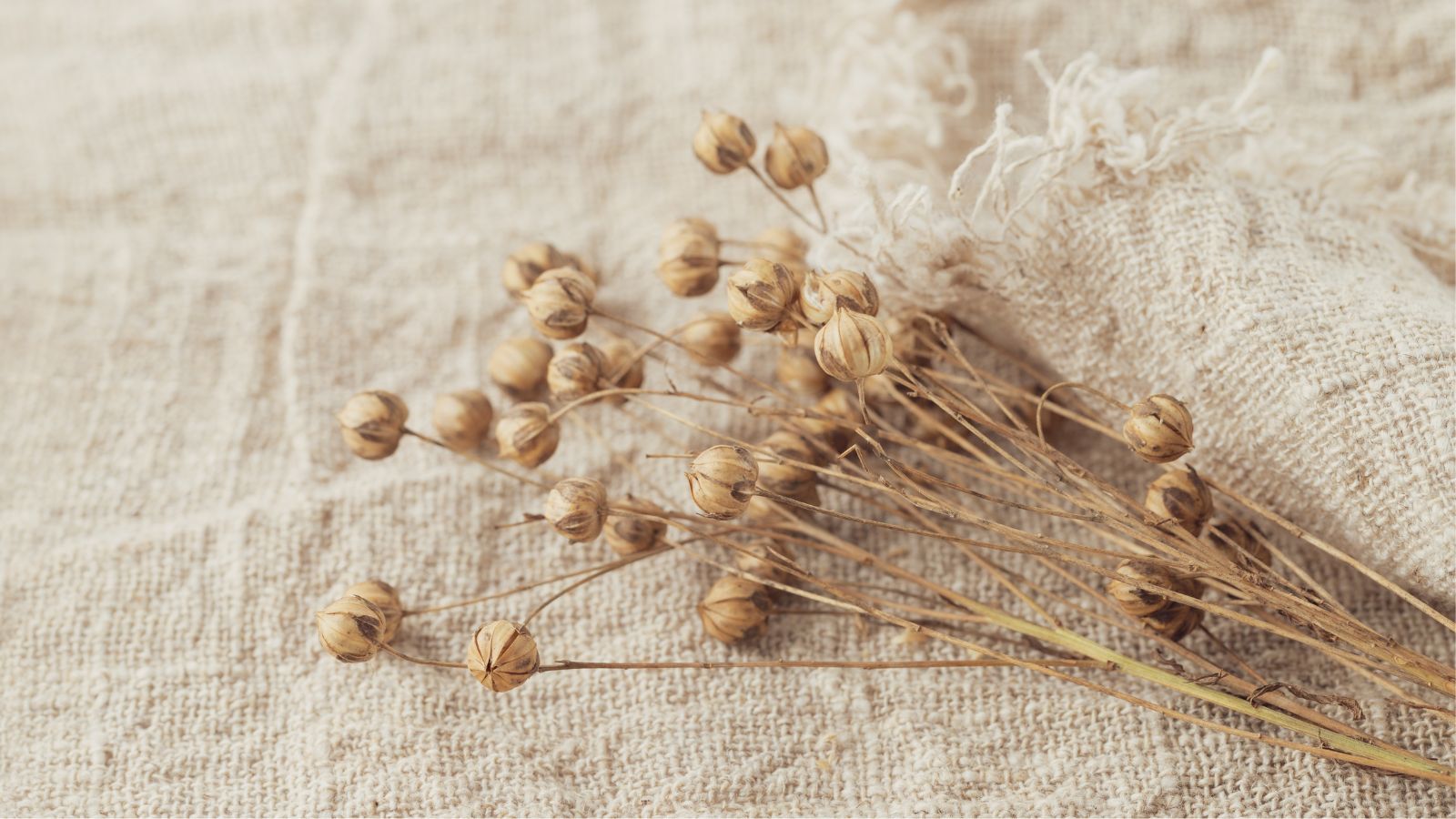 Lay them out in a place with good air circulation.
Lay them out in a place with good air circulation.To dry the pods more for easy harvesting, lay them out to dry in a space with good air circulation. You can also bundle the stems and hang them upside down to dry. Leave them for several weeks until completely ready.
Separating
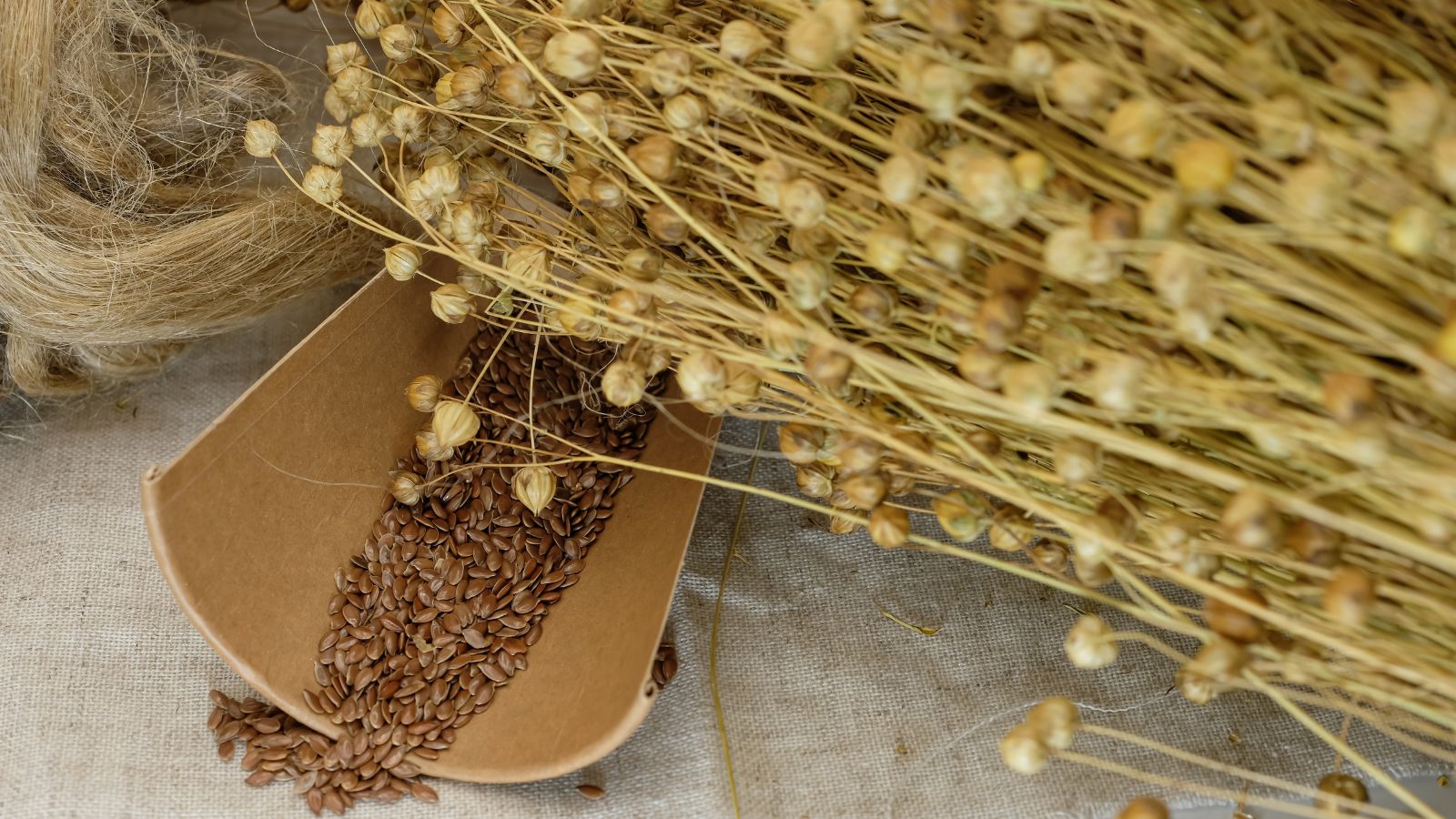 You can hand-thresh the bundles against a cloth on a hard surface.
You can hand-thresh the bundles against a cloth on a hard surface.The most tedious part of processing the seeds is separating the nutrient-dense seed from the chaff, or protective seed casing.
To thresh flaxseed, beat or shake the bundle of stems against the cloth on a hard surface. You find creative solutions to extraction, like rolling the seedheads or tamping them with a mallet (without pulverizing the seeds). Sift the chaff from the seeds for storage.
Storage
 Store threshed seed in an airtight container.
Store threshed seed in an airtight container.With fresh seeds separated from their casings, they are ready for dry storage, pressing into oils, or grinding for flaxseed meal or flour. Fresh seeds will store for up to two years in an airtight container. Ground seeds and oil last for six months in the refrigerator or freezer.
Reseeding
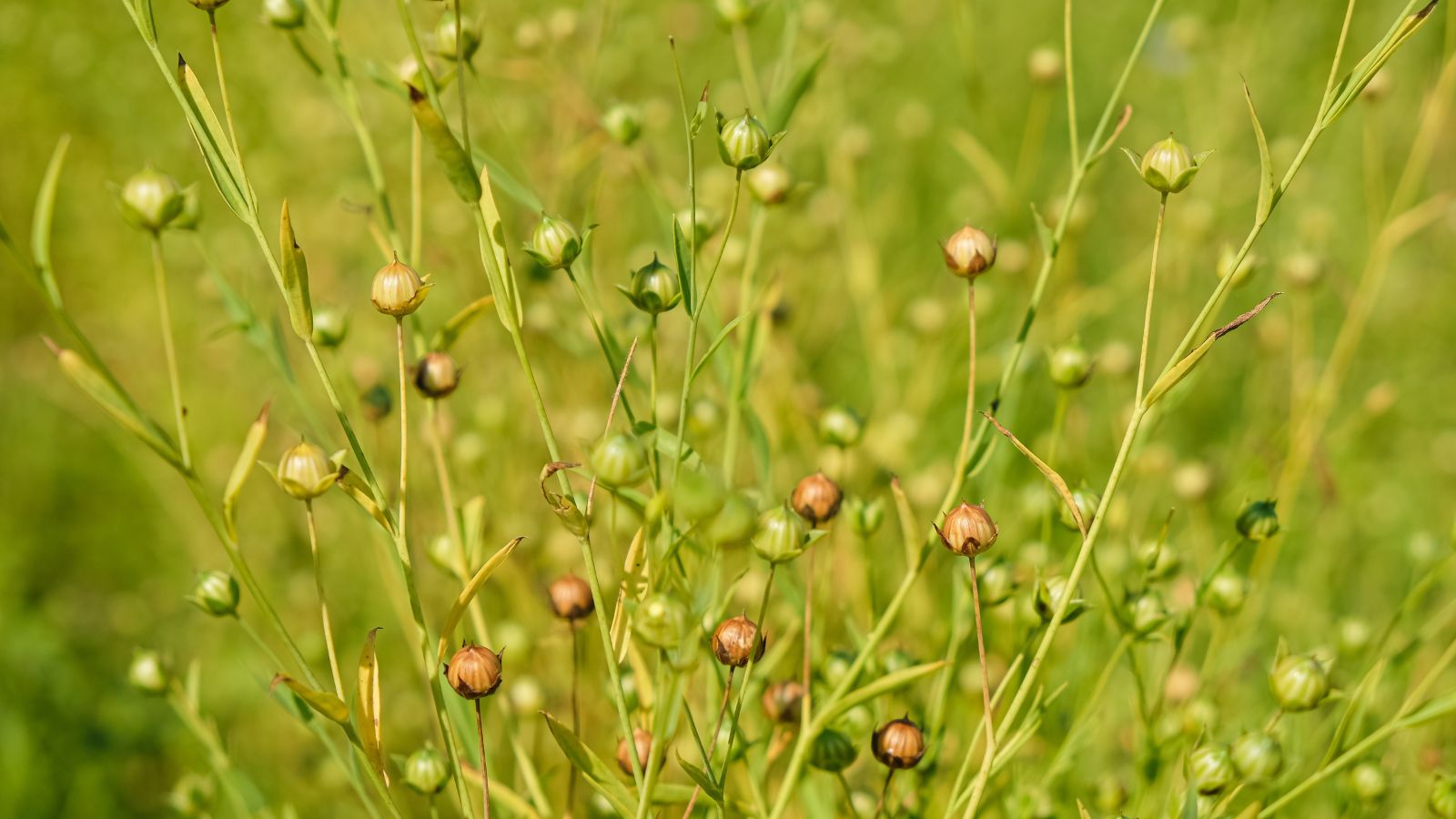 Leave stems in place to encourage self-sowing.
Leave stems in place to encourage self-sowing.To encourage flax to reseed, leave some stems in place. As they age and dry, they naturally drop and disperse. They overwinter to germinate the following spring. Flaxseed isn’t invasive, but it can spread aggressively. Deadheading or clipping stems for seed harvesting helps limit the spread.
To sow collected seeds, soak them first to soften the seed coat. They develop mucilage with exposure to water. Direct sow by spreading them across the soil surface before spring’s final frost. Aim for sowing six to eight weeks before the anticipated frost date. Or start them indoors by soaking them and spreading them across potting media in a tray.
Transplant seedlings after the final frost, taking care to protect their sensitive roots from disturbance.
Frequently Asked Questions
Perennial flax (Linum perenne) differs from the common annual flax (Linum usitatissimum) grown commercially for seed, oil, and fiber. The perennial also produces edible seeds with a nutty flavor. They contain cyanide, and cooking or boiling them first removes the toxic compounds. Both species produce attractive true blue flowers, are low maintenance, and have the capacity to reseed.
Flaxseed bridges the ornamental and edible landscape (and there are purely ornamental species and varieties, too). Common flax grows two to four feet tall and adds an airy quality to sunny borders. The sky blue flowers appear throughout the season and are attractive, leading up to the seed harvest at season’s end. Flax grows in pots and containers large enough to house their extensive taproots. Use a well-draining potting mix and check moisture regularly during the summer.


 5 days ago
8
5 days ago
8





















 English (US) ·
English (US) ·  French (CA) ·
French (CA) ·